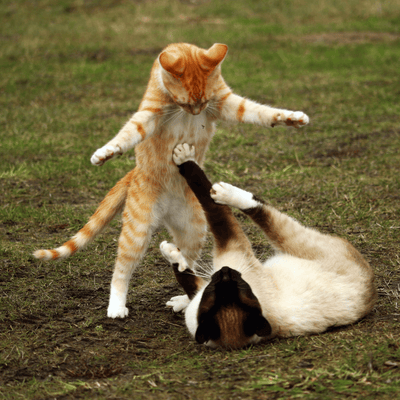A Deep Dive into Animal Intelligence
The age-old debate about whether cats or dogs are smarter sparks discussions among pet lovers and researchers alike. The answer isn’t straightforward, as it largely depends on how one defines intelligence. Intelligence in animals encompasses a range of factors, such as emotional awareness, problem-solving abilities, social cognition, and adaptability. Cats and dogs exhibit unique strengths across these areas, making direct comparisons both intriguing and complex.
To better understand their distinct capabilities, let’s explore the characteristics that define the intelligence of each species.

Understanding Dog Intelligence
Dogs are often celebrated for their exceptional social intelligence and remarkable trainability. Over thousands of years, dogs have evolved alongside humans, developing an extraordinary ability to read and respond to human cues. This evolutionary bond has positioned them as loyal companions and indispensable workers.
Traits That Showcase Canine Intelligence:
-
Trainability and Obedience: Dogs excel at learning and performing tasks, especially those requiring cooperation with humans. They respond to commands, retain instructions, and adapt behaviors to suit their roles.
-
Versatility in Roles: Dogs participate in various specialized activities, including service work for individuals with disabilities, search-and-rescue missions, and roles in law enforcement and the military. These tasks often demand critical thinking, quick decision-making, and emotional intelligence.
-
Emotional Connection: Dogs demonstrate an acute sensitivity to human emotions, often providing comfort during distress or mirroring their owners’ moods. This unique social awareness is unparalleled in the animal kingdom.
Dogs thrive in structured environments where they can apply their natural instincts toward collaboration and problem-solving. Their eagerness to please often makes them ideal partners in human-centric tasks.

Exploring Cat Intelligence
In contrast to dogs’ social orientation, cats showcase a more independent and self-reliant type of intelligence. Descended from solitary hunters, cats rely on their sharp problem-solving skills, stealth, and adaptability to navigate their world. These traits highlight their evolutionary history as apex predators.
Characteristics of Feline Intelligence:
-
Problem-Solving Expertise: Cats demonstrate the ability to analyze situations and devise creative solutions. Whether it’s opening cabinets, retrieving hidden objects, or escaping confined spaces, their resourcefulness is impressive.
-
Curiosity and Observation: Cats are natural explorers. Their curiosity drives them to investigate their surroundings meticulously, and they learn effectively through observation, often mimicking behaviors they’ve seen.
-
Independence: Unlike dogs, cats are less motivated by human approval. Their intelligence is often displayed in their ability to operate autonomously, making decisions that prioritize their survival and comfort.
-
Emotional Bonds on Their Terms: While cats may not express affection as overtly as dogs, they form deep attachments to their humans, often demonstrating loyalty and trust through subtle gestures like purring or head-butting.
Cats’ intelligence is reflected in their ability to adapt to new environments, solve puzzles, and maintain a strong sense of autonomy.

Comparing the Two: A Balanced Perspective
The question of whether cats or dogs are smarter ultimately depends on the context and the type of intelligence being measured. Here are some comparative aspects to consider:-
Social Intelligence:
-
Dogs excel in social settings, displaying a keen ability to cooperate, understand commands, and bond with humans.
-
Cats, while less socially driven, are perceptive of human emotions and build relationships on their own terms.
-
-
Problem-Solving Skills:
-
Cats often surpass dogs in scenarios requiring individual problem-solving and adaptability.
-
Dogs shine when teamwork and direction from humans are involved.
-
-
Learning Styles:
-
Dogs are eager learners, especially when rewards or praise are involved, making them more trainable in structured tasks.
-
Cats prefer to observe and learn independently, often without explicit training.
-
-
Adaptability:
-
Dogs adapt by integrating into human routines and social structures.
-
Cats adapt through stealth and self-sufficiency, thriving in diverse environments without relying heavily on human guidance.
-

Conclusion: Intelligence is Relative
Rather than trying to label one species as definitively smarter, it’s more insightful to recognize the distinct forms of intelligence cats and dogs possess. Dogs are masters of social interaction and collaboration, while cats excel in independence and self-reliance. These differences reflect their evolutionary roles and unique contributions to human lives.
Ultimately, the “smarter” species may depend on what qualities one values in a companion. Whether it’s a dog’s willingness to learn and work or a cat’s resourcefulness and curiosity, both bring extraordinary intelligence to the table, enriching human lives in their own special ways.

























